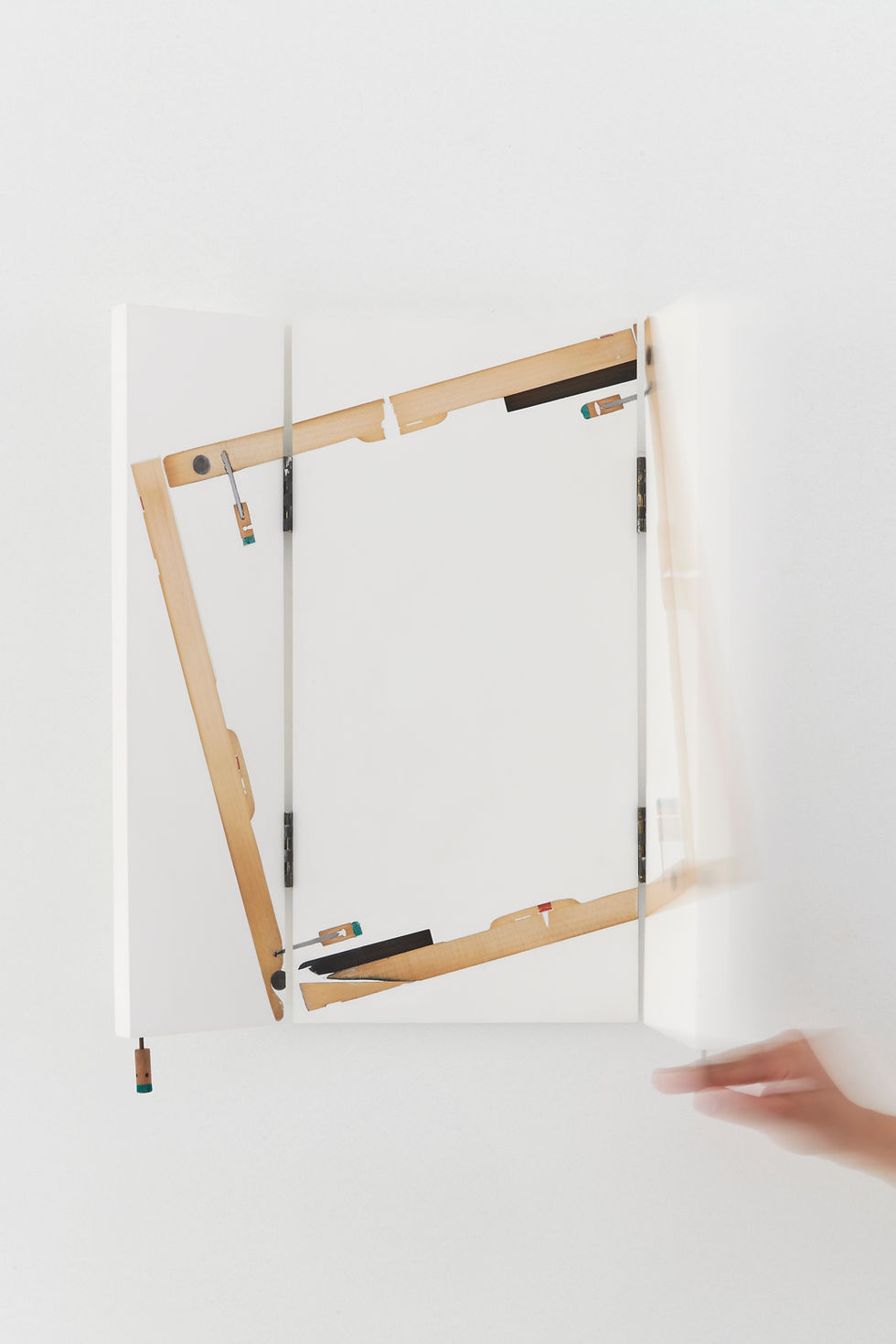Oma, Galerie Thaddaeus Ropac, London
Oma
Galerie Thaddaeus Ropac, London
11 September - 24 October 2020
Oliver Beer’s exhibition Oma presents a new sound installation alongside sculptural wall works that are steeped in musical inheritance and exchange.
Following the artist’s solo exhibition Vessel Orchestra at the Met Breuer, New York in 2019, the exhibition transforms the Ely Gallery into a space where the sacred and domestic seem to intermingle. Centred around the installation of an early twentieth-century Steinway pianola (a self-playing piano), the work fills the gallery with a deeply personal piece of music composed in old age by the artist’s grandmother, Oma, transcribed and re-performed by Beer for this exhibition.
Featuring the artist’s first circular ‘Two Dimensional Sculpture’ alongside new works that, for the first time, introduce a kaleidoscope of colour, Oma marks Beer’s second exhibition at Galerie Thaddaeus Ropac London, following his solo presentation as part of the inaugural programme when the space opened in 2017.
Drawing on his background in both music and fine art, Beer’s practice explores the relationship between sound and space with a particular focus on the voice and architecture. Within and alongside his work with sound, Beer creates subtle and diverse sculptural, installation and film projects that are autobiographical yet also touch upon universal, often intimate, concerns.
The artist’s social and familial relationships often feature in his multidisciplinary practice, forming the lens through which he explores different strands of individual and collective experience. Extending beyond personal history, Oma considers the connective potential of music passed between generations and cultures, as well as the discriminatory social history of music as a field that is inaccessible to many parts of society.
Born in 1913, Oma was forbidden any form of musical education by her father, who was himself a professional violinist. She made her first composition at the age of 87, which – unable to transcribe herself – she communicated to her grandson through a combination of singing and drawing. Transcribed by Beer into a dense graphic score in blue ink, Oma’s musical textures and tones are presented as both a visual translation and an immersive musical experience. These works represent a continuation of the artist’s interest in the transmission and exchange of music, while considering the barriers to access his grandmother faced – forms of discrimination that continue to this day.
"Although my grandmother’s story and this intimate moment of musical exchange seems rooted in the past – she was born in 1913 – the sentiment behind it is still very relevant in the 21st century when music is both a force of inclusion and exclusion. I wonder what music my grandmother could have made if the patriarchal society of her day had not excluded her from mainstream musical culture, and I feel conflicted about how Oma’s music has only now become audible through me. Even today only 17% of registered professional music writers in the UK are women, according to the Performing Right Society. The decisions we take now about who has access to music will change the cultural landscape of the 21st century" - Oliver Beer



Four piano keys from the artist's grandmother's piano, sectioned and set in resin; gesso
